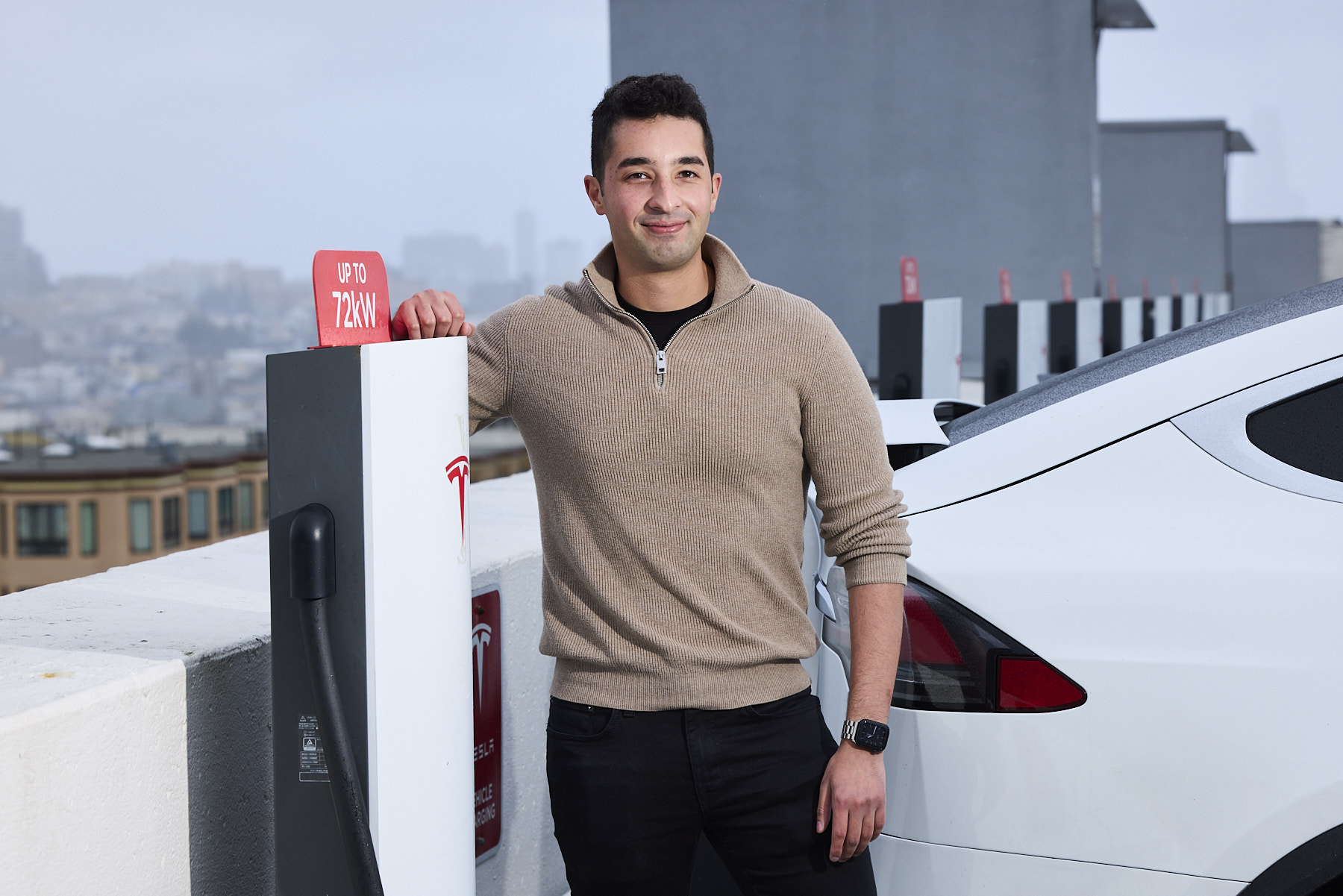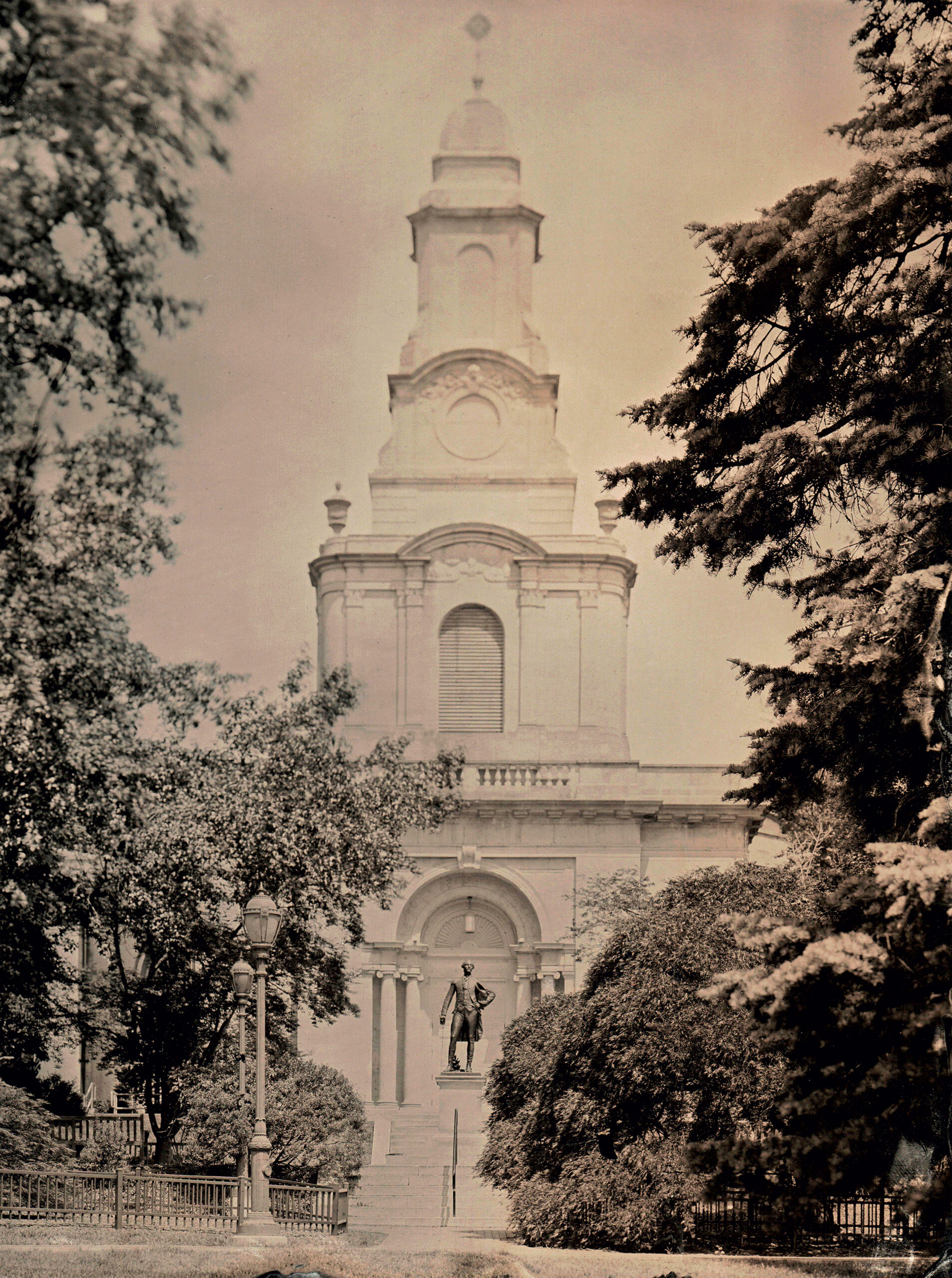Software engineer Wassim Gharbi ’19 takes us inside the world of Silicon Valley.

After earning a computer science degree, Gharbi has been employed by tech giants including Google and Tesla.
Photograph By Gabriela Hasbun
After graduating with a degree in computer science—and completing two Google internships as a student, one on each coast of the United States—Wassim Gharbi ’19 moved to California to work as a software engineer at Google. Shortly after arriving, he created a startup within the company by developing a social video app for people who wanted to share quick instructional content like DIY home projects, makeup tutorials, and easy cooking recipes. Tangi Quick Videos feels like a more informative and inspirational version of TikTok; it was eventually acquired by Google Search.
Gharbi then moved to the self-driving division at Lyft in 2021. After just a few months of him being there—and in true Silicon Valley fashion—his division was then acquired by a subsidiary of Toyota. In that software engineering role, Gharbi analyzed the self-driving car’s camera feeds, surrounding obstacles, maps, and GPS data to monitor how the autonomous vehicles were performing. “What I created was a bit like a Bloomberg Terminal for the self-driving car,” Gharbi says. “The engineers would be able to see if anything went wrong during the drive.”
Now, as a senior software engineer for Tesla, he oversees a visualization team in Palo Alto, Calif. The team focuses on energy at both the residential and industrial levels. So, understanding how Tesla batteries perform—be it for electric cars, home batteries, or other products on the market—might mean analyzing drops in voltage, or what happens when batteries operate under certain conditions. “I create tools that other engineers use to potentially dive into issues whenever they happen,” Gharbi says.
Although the electric vehicle and clean energy markets continue to grow year after year, Gharbi says that Tesla still operates like a startup. “It feels very engineering focused, and that’s what I like about it,” he says. “Everyone from the senior director to the first-time intern is empowered to make and own their decisions.”
Here, the software engineer talks about the biggest buzz in his world of tech.
The race for autonomous vehicles
“People think driverless cars are in the distant future, but it’s already happening here in San Francisco,” says Gharbi, explaining that city dwellers have been embracing the 24-hour ease of getting picked up and dropped off by them. (Last year, Google’s driverless car, Waymo, completed more than 4 million paid trips in San Francisco, Los Angeles, Phoenix, and Austin.)
Gharbi expects the robotaxi market and the infrastructure built around it—like wireless charging stations to power these vehicles—to surge. In October, Tesla revealed its own plans for a two-seater Robotaxi, plus a larger Robovan.
On-demand energy
When Hurricane Helene knocked out power across the U.S. in the fall, electric vehicles with bidirectional charging made headlines for helping to keep lights on and refrigerators running in homes.
Tesla is also developing Virtual Power Plants, in which owners of a Tesla Powerwall battery can send excess stored energy back to their local grid for distribution— something that might be valuable when demand is high.
The robots are coming
New Scientist revealed there could be a “robotic boom” this year with thousands of humanoid robots entering warehouses, factories, and homes. Tesla is set to produce a number of “Optimus” units, something that has the potential to transform manufacturing. As for the home, bots like these could be used for tasks like folding laundry and watering plants.
An engineer and entrepreneur
While in Silicon Valley, Gharbi co-founded a digital forensics company called CoreViz to analyze crime scene evidence through AI and computer vision—the first of its kind in the U.S. The prototype, which is currently being piloted with Madera County Sheriff’s Office, can evaluate images of shoe imprints left behind to make a match. With the capability to also collect evidence through a mobile app, the technology automates what is still considered a very manual and time-consuming process for law enforcement and other agencies. CoreViz is currently seeking an investment round to commercialize its technology and expand it to video surveillance, vehicle and suspect recognition, and object identification such as the specific makes and models of cars.
Advice for students
Gharbi says that college students should be doing their best to find a way to differentiate themselves in today’s crowded software engineering market. For him, that meant staying busy with personal side projects during college, like when he engineered a people-counting sensor to track how many guests were entering and leaving the Lafayette Recreation Center. (Students on his app could then anticipate how busy the facility was at any given time.) “Find something you’re interested in and try to create,” he says. “Even if you struggle at first, that learning process translates very well into what you will do full time.”



